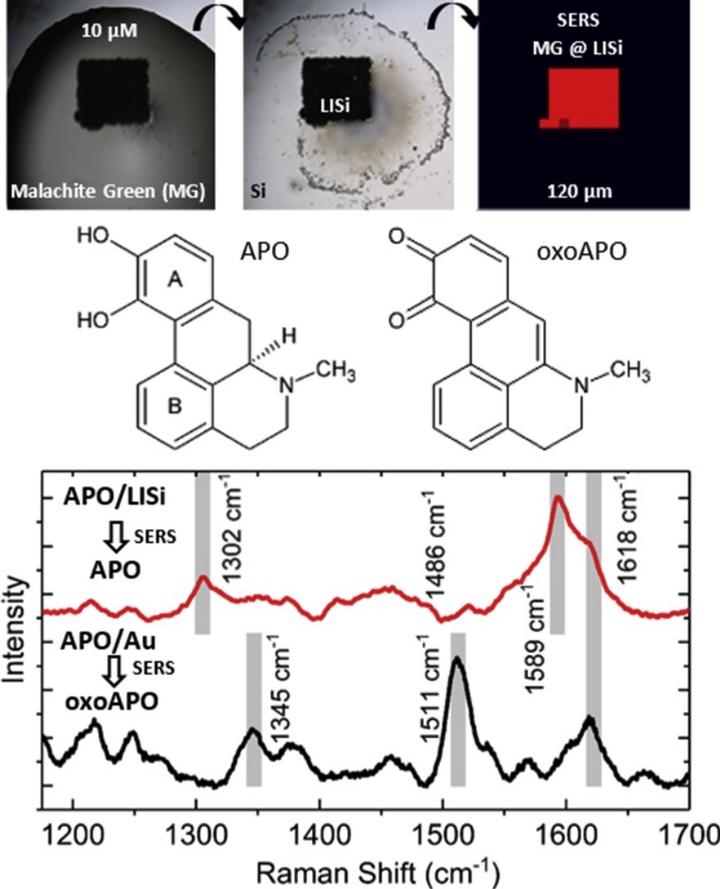Laser writing of nanostructured silicon arrays for the SERS detection of biomolecules with inhibited oxidation

Abstract
The present work reports the processing of laser irradiated Si arrays (LISi) and underlines their surface enhanced Raman scattering (SERS) functionality. A nanostructured Si/SiOx surface forms providing additional fluidic and photoprotective properties. Because of their optical and surface characteristics, the arrays exhibit a SERS analytical enhancing factor of 500, without any noble metals such as gold or silver. Micro-Raman maps allowed studying LISi properties, identifying maximum amplification in nanostructured areas characterized by the presence of 7 nm Si nanocrystals. These structures are confined by a SiOx layer as illustrated by XPS valence band measurements. The highly hydrophilic LISi areas allow a pre-concentration of target molecules prior to SERS analysis. A relevant application of LISi was found in the detection of apomorphine (APO), a drug used for the treatment of Parkinson’s disease. In contrast with what is obtained by using gold SERS substrates, LISi allows the detection of APO with no sign of oxidation. This invites for the use of the Si/SiOx SERS detection in future systems for the personalized delivery of APO.
Full citation:
P. Pellacani, V. Torres-Costa, F. Agulló-Rueda, R. Vanna, C. Morasso, and M. Manso-Silván,
“Laser writing of nanostructured silicon arrays for the SERS detection of biomolecules with inhibited oxidation,”
Colloids Surf., B 174, 174–180 (2019).
DOI: 10.1016/j.colsurfb.2018.11.010